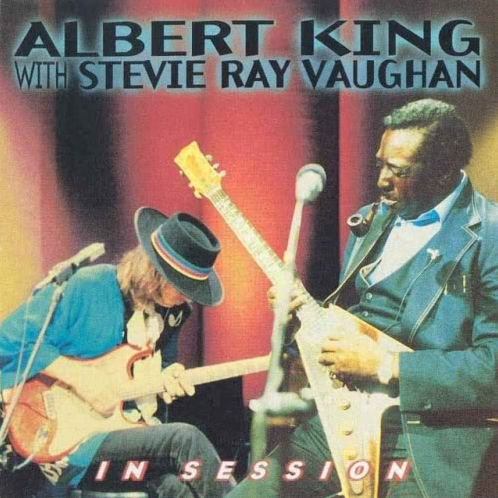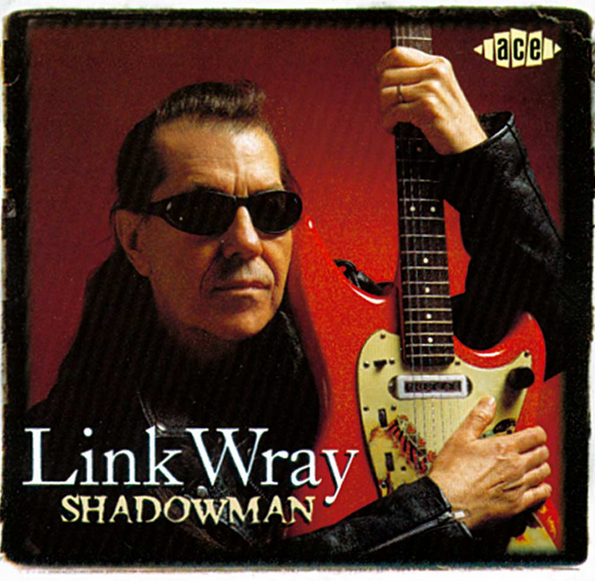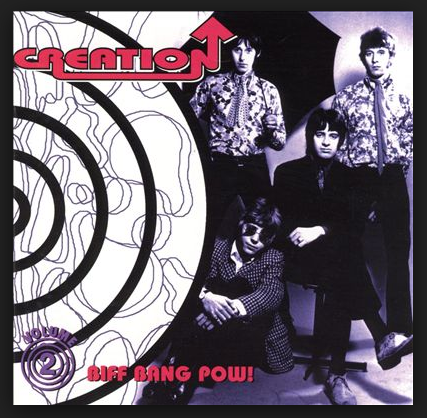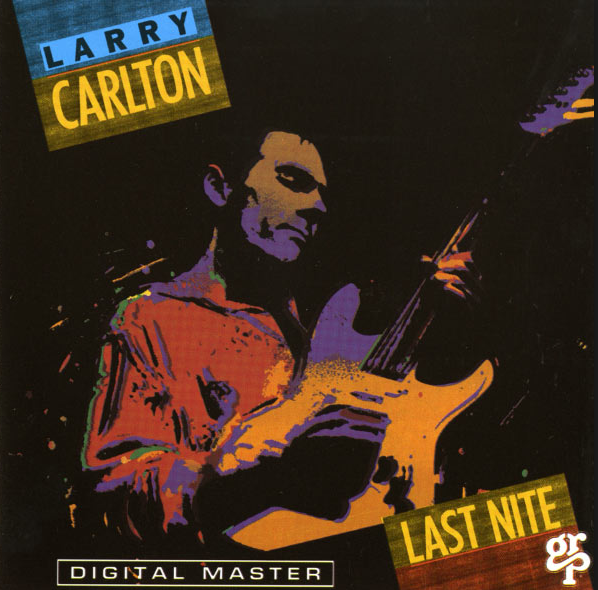25 Off-the-Beaten-Path Albums Every Guitarist Needs to Hear

When gutter laureate Charles Bukowski spat out “nobody knows anything,” he certainly wasn’t taking guitarists into account.
Any one of us can pontificate endlessly on glorious and heinous tones, regurgitate seminal riffs note for note, and detail the most exotic of signal paths.
And on the subject of classic guitar albums, everyone pretty much knows everything. Sorry, Charlie. And yet, the legacy of recorded guitar does not rest solely upon the discographies of Hendrix, Clapton, Beck, Page and other six-string deities. Nor does it always embrace established classics, technical masterpieces and mammoth hits.
Deep in the grooves and digital data streams of under-appreciated and forgotten releases are moments of brilliance that deserve another chance to inspire legions of guitarists. These records were produced by heroes and wackos alike, and they resonate with just as much passion as many of the annointed albums that make up the typical guitarist’s list of desert-island discs.
Of course, there are thousands of closet classics out there, and short of a 50-pound coffee-table book, there’s scant chance of cataloging them all. But just for fun, we voted on a list of 50 under-the-radar albums graced with performances every guitarist should assimilate into their trick bags. So check a few of these babies out, and ensure that Mr. Bukowski could never call you out on your comprehensive knowledge of bitchin’ guitar recordings.
CHET ATKINSHometown Guitar (1968)
A great guitar album should inspire you musically, but it’s hard to play when your jaw is on the floor. Despite the humble cover shot, this obscure record contains cocky, mind-boggling licks that will leave you asking, “How did Chet Atkins make it sound so easy?”
All the latest guitar news, interviews, lessons, reviews, deals and more, direct to your inbox!
In the modal theme to “Get On with It,” for example, Mr. Guitar peels off spectacular nylon-string cascades with such casual precision, it’s almost comical. He might as well be shuffling a deck of cards. Another flabbergaster is the down-home “Blue Angel.”
It sounds like Paganini playing a two-step, as Atkins splices together an action-packed melody using fretted notes and open strings. Soon you realize you’re hearing a player who transcended mere chops. What Atkins brought to the guitar is closer to the dedication and grace you see in Olympic gold medalists. But don’t worry—these licks aren’t impossible. They’re just something to shoot for. Like the moon.
EDDIE BOYD7936 South Rhodes (1968)
Pianist Eddie Boyd may be one of the lesser-appreciated icons of American blues, but sparks certainly flew during this landmark, six-hour session that paired him with the members of Fleetwood Mac (minus Jeremy Spencer). The real hit here, of course, is guitarist Peter Green, who smolders with soulful intensity on the dozen Boyd-penned songs. Green’s spirited riffing and lyrical solos—which often feature his celebrated out-of-phase Les Paul tone—elevate the music in spite of Boyd’s notoriously somber lyrics and rather plodding piano style. The result is an album that can be appreciated by guitar nuts and blues historians alike.
LARRY CARLTONLast Nite (1987)
You’ll often find L.A. hotshots trading licks at the cozy Baked Potato in North Hollywood. Sadly, the only evidence of most of these magical jams are the next morning’s hangovers and ringing ears. Well, here’s one that didn’t get away. From the very first lick, you can tell Larry Carlton is having one of those inspired nights where everything goes right. The real treat is “The B.P. Blues,” a slow-burning 12-bar jam that climaxes with dazzling fretboard fireworks. ‘‘At least once a night, I play a straight-ahead, down-home blues,” Carlton says in the liner notes. “It’s good for the soul.” It’s also good for your soul, as you lose yourself in that impossibly creamy guitar tone. Even Carlton’s softest notes seem to sustain forever. And amazingly, the louder and busier he gets, the better he sounds.
JAMES BURTON & RALPH MOONEYCorn Pickin’ and Slick Slidin’ (1969)
‘‘Burton and Mooney. You know the names, but not the team. It’s new!” exclaims the liner notes to this often-overlooked prize. By the time Corn Pickin’ and Slick Slidin’ was released, James Burton and pedal-steel wizard Ralph Mooney had already graced hundreds of records between them. Com Pickin’ and Slick Slidin’ finds the duo playing instrumental versions of country classics such as “Your Cheatin’ Heart” and “I’m a Lonesome Fugitive,” as well as a few original compositions. Although Burton’s trademark chicken-pickin’ licks make an appearance (the track “Moonshine” may contain his duckiest phrasing ever), it’s his lyrical Dobro work that takes center stage. Corn Pickin’ and Slick Slidin’ is about tasty interpretations of classic tunes by two legendary players.
THE CREATIONThe Complete Collection, Volumes I and II (1966–68) (2001)
Other players got the glory for their feedback excursions, but Creation guitarist Eddie Phillips is the lost master of noise-splattered squeals, squalls and psychotic freak-outs. He was so over the top that Pete Townshend once asked him to join the Who as second guitarist. One can only imagine the feral cacophony those two could have launched. The Creation got a wink from filmmaker Wes Anderson in 1998, when he used a snippet of the band’s “Making Time” as the soundtrack to the main character’s thought process in Rushmore. It was 15 seconds of riff majesty that moviegoers were humming on the way out of the theater. The Complete Collection shows you what Phillips could do with a full two-minute pop song.
FREEFree Live (1971)
The late Paul Kossoff was arguably the most underrated guitarist of the late-Sixties British blues boom. More aggressive than Clapton and Green, yet more lyrical than rockers such as Mick Ralphs, Kossoff was a musical bridge between traditional electric blues and riff rock. Although their studio records were heavy on attitude, Free Live unleashes a tremendous dose of strut and swagger. Kossoff’s guitar is absolutely huge throughout, and you’ll quickly realize how big an influence he was on players such as Angus Young and Gary Moore. Double-stop cries, super-wide vibrato and absolutely killing tone were just a few of Kossoff’s strong points. Free Live also proves that Free was one of the heaviest, groovingest and most ass-kicking rock bands ever.
ROBBEN FORDThe Inside Story (1979)
Robben Ford was a veteran sideman with Tom Scott & the L.A. Express, Jimmy Witherspoon, Joni Mitchell and George Harrison when he cemented his status as a solo artist with this fusion-oriented album. But unlike the syrupy L.A.-jazz releases of the era, Ford’s music simmers with earthy soul. Even when stretching his newfound jazz muscles on such soaring cuts as “For the One I Love,” “There’s No One Else” and “Far Away,” Ford’s gutsiness remains intact. It’s hard to say how much of the album was shaped by the production hand of Steve Cropper, but the R&B guitar legend deserves credit for presenting Ford as a cutting-edge jazz artist with wailing blues chops. On “North Carolina,” for example, Ford wraps up his solo in a riveting duet with harp player (and brother) Mark Ford. Another high point is “Tee Time for Eric,” a funky, up-tempo number with tricky changes that Ford tackles with astonishing skill. The Inside Story is definitely a high-water mark of Ford’s affair with fusion, and it’s one jazz-rock record that will never sound dated.
MERLE HAGGARDThe Instrumental Sound of Merle Haggard’s Strangers (1969)
Merle Haggard was the hottest thing in country in 1969, and this all-instrumental album gave his band a much deserved opportunity to strut its stuff. And, man, was there a lot to strut. The coolest cuts feature guitarist Roy Nichols and steel-player Norm Hamlet, who demonstrate the fine art of duet playing on “Leavin’ Phoenix,” “Poppin’ Corn,” “Hammin’ It Up,” “Whooper Snooper” and ‘‘A Hop and a Skip.” Both players were at the top of their game at this point (thanks, in part, to Haggard’s letting them stretch out so much onstage), and you’re treated to megadoses of Nichols’ signature string bending and chicken pickin’. Nobody makes albums like this anymore, and we’re just damn lucky that someone at Capitol Records was willing to let Hag’s road band have its way in the studio.
JELLYFISHSpilt Milk (1993)
This underappreciated effort from pop-rock historians Jellyfish contains some of the best tunes that the Beatles, Badfinger and the Beach Boys never wrote. And each one is full to bursting with great guitar, courtesy of Lyle Workman and Jon Brion. Relying on a huge collection of vintage gear (“We had Gibsons, Fenders, Rics, Gretsches, Voxes, Marshalls, Hiwatts, Magnatones and more,” recalls Workman), Brion strolls down classic rock’s memory lane with righteous Queen-isms in “Joining a Fan Club,” and Fab Four–to-the-bar AC30 spanks in “Sebrina, Paste and Plato.” Workman works similar magic in “The Ghost at Number One,” cuts out-of-control feedback tracks in ‘‘All Is Forgiven,” and lays down glorious acoustic and tasteful electric parts in “Glutton of Sympathy.” His finest moment might be the Harrison-esque slide solo in “New Mistake,” which was played on an ES-335 plugged into a vintage Gibson combo. “I know that [Jellyfish founders] Roger Manning and Andy Sturmer didn’t set out to make just another pop record,” Workman says. “They wanted Spilt Milk to be an important musical statement. Although the sales were disappointing, the album succeeds from a musical standpoint.”
ERIC JOHNSONSeven Worlds (1998)
When Eric Johnson’s Grammy-nominated debut, Tones, came out in 1986, it signaled to the world what music nuts in Austin, Texas, had known for years: A new guitar genius was on the loose. What most people still didn’t know, however, was that Johnson had recorded a solo album between 1976 and 1977 that would not see the light of day until 1998. That record, Seven Worlds, makes it clear that Johnson had nailed his trip and his sound way before Tones. (In fact, the takes of “Zap” and “Emerald Eyes” that appear on Worlds rival the versions on Tones.) It’s clear Johnson didn’t have the budget for limitless takes and overdubs and, as a result, the tracks have an immediacy and rawness that’s almost nonexistent on his subsequent releases. “Missing Key” features Johnson’s unmistakable clean tones and lush chord work, and ‘‘Alone with You” features perhaps the grittiest overdrive that he has ever put to tape as well as a smoking solo that showcases the classic “violin” tone and impeccable speed picking that have become his hallmarks. One of the coolest things about the “Alone with You” solo is that you get to hear the perfection-obsessed guitarist make an ever-so-slight mistake. It’s not a disappointment, however, as the track’s energy is absolutely stunning.
SENSATIONAL ALEX HARVEY BANDThe Impossible Dream (1974)
Guitarist Zal Cleminson had the great luck and misfortune to fall in with a mad genius named Alex Harvey. On the good side, Cleminson’s tenure with SAHB brought him the critical glory of being in a barrier-breaking act that mixed hard rock with theater and fused British music-hall styles with glam pretension and hippydippy idealism. No wonder the best SAHB albums are considered lost classics by European hipness custodians such as Mojo and Q. The not-so-great part was that Cleminson had to paint his face in a Pierrot-style mask and wear a puppet outfit onstage. American audiences were not amused. But within the circus that was SAHB, Cleminson’ s SG-fueled riffery was astounding. On The Impossible Dream, he uncorks jaw-dropping performances on “Vambo” (snakey wah pirouettes), “Weights Made of Lead” (stuttering, Uzi-like sweeps), “River of Love” (hammer-headed chordal punches) and “Anthem” (a soaring duet with bagpipes). Cleminson’s getup may have looked silly, but the man’s playing was a dead-serious fusion of dizzying technique, melodic brilliance, grand pretension and rock-stud bombast. He’s probably the greatest Seventies-era guitar hero you’ve never heard.
SPLATTERCELLOAH (2000)
It’s difficult to categorize OAH, but David Torn’s gorgeous, sometimes disturbing, arrangements sound kind of like a head-banging Indian Brahmin who—armed with a collection of primitive instruments, a couple of electrics and a killer tube amp—time-traveled to a 22nd-century jam with aliens. To create his otherworldly masterpieces, Torn warps and mutates improvised jams or “cells” (which range from less than a second to a few minutes in length) using digital-editing software such as Emagic’s Logic Audio, Sonic Foundry’s Acid and Native Instruments’ Reaktor. The manipulated cells are then used to create rhythmic backdrops, over which Torn adds more magnificent madness with guitar, Najarian oud, kikuyae and other stringed instruments. Torn’s deft implementation shows that digital editing and guitar can coexist peacefully, and the process doesn’t have to render your guitar lifeless and sterile. His compositions may be totally off the wall, but Torn’s guitar tones—which range from feedback-soaked fusillades (“Hedewa” and “Chrysanthemum Bang”) to pristine fingerpicked passages (“Wave from Water” and “Unravelled”)—are lush, organic and dripping with complexity.
GARY MOORECorridors of Power (1982)
Deep-fry the blues and heavy metal in a vat of boiling testosterone, and you get Gary Moore’s sound on this album—a take-no-prisoners tone that leaves home-stereo speakers bleeding. The white-hot power chords that open “Cold Hearted,” for example, are proof that a stock Strat, a Marshall and a Boss distortion pedal can shake the earth like an angry volcano. Speaking of volcanoes, fans of Van Halen’s “Eruption” will surely dig the cadenza that opens “The End of the World.” Moore means every 64th note he plays, and even when he’s shooting off fretmelting rock licks, his blues come through loud and clear.
ALBERT KING WITH STEVIE RAY VAUGHANIn Session (1999)
Taped at a Canadian television studio in 1983, this never-to-be-repeated pairing of two blues giants provides a unique opportunity to witness humor and head cutting. Vaughan defers to the elder bluesman by playing in an uncharacteristically restrained manner, while King does an equally unusual thing-he willingly plays rhythm behind another lead guitarist. The back-and forth banter is great—especially King’s fatherly assurances to Vaughan that he’ll “get better”—and when it’s time to play, both men turn it on like they’re performing at a great live gig. Despite struggling with tuning problems, King sounds bold and brazen, and when he kicks on his phase shifter, it’s downright scary! Vaughan is, of course, amazing. Superstar jams are typically pretty depressing affairs, but this one works because both players were blessed with a very special attribute—soul.
UFOObsession (1978)
Although Michael Schenker’s notoriously unreliable work ethic prevented him from enjoying anything but culthero status, his inventiveness, distinctive tone and flat-out burning while with UFO are beyond reproach, and he would deeply influence Randy Rhoads, Vinnie Moore, Mike Tempesta and many others. The pinnacle of Schenker’ s work was Obsession, the last studio album he would record with UFO until his 1995 return to the band. Here, his unmistakable tone-created by plugging a Gibson Flying V into a wah pedal set to its mid position, and then into a “Plexi” Marshall is in full swing, and he showcases it with memorable solos on every tune. The guitar melodies in “Hot ‘n’ Ready” and “Cherry” are catchy and hummable, and his cadenza in “Born to Lose” is a stunning example of compositional skill. Although Schenker never attained a great deal of commercial success, his playing on Obsession stands as a melodic-metal tour de force.
LIVING COLOURTime’s Up (1990)
While Living Colour’s Platinum debut, Vivid, smashed musical and societal barriers, its successor, Time’s Up, showed that there was way more up guitarist Vernon Reid’s sleeve than metalloid riffs, chromatic soloing and a little funk. The title track pits Bad Brains–style hardcore against a funky backbeat, and boasts a solo that starts off in harmonic minor, manically progresses to whole tone/chromatic/diminished territory, and ends up with a swaggering blues feel. For “Love Rears Its Ugly Head,” Reid straps on a PAF-loaded Gibson ES-345 to dish out restrained R&B rhythms, and “Under Cover of Darkness” features Gibson Byrdland-driven faux-organ tones and swinging rhythms. Besides brilliantly mixing flavors from all over the globe into the band’s unique style, Time’s Up shows just how awesome effects can sound when a genius gets a hold of them. Using an Eventide H3000 and a DigiTech DSP-256, Reid gives Time’s Up bizarre, one-of-a-kind sounds that are seamlessly integrated into each song.
PINK FLOYDThe Division Bell (1994)
The Division Bell may never be considered a classic Floyd record, but David Gilmour’s extended guitar solos on it will still elicit gasps from fans of his singing, echo-washed Strat tones. Highlights include the instrumental “Marooned” (which boasts one of the most beautiful and seamless implementations ever of DigiTech’s venerable Whammy pedal); the eerie, backward EBow lines, delay drenched syncopations and ethereal harmonized solo on “Take It Back;” and the gorgeous, sparkling-clean Strat licks on “Coming Back to Life.”
GEORGE BENSONBad Benson (1974)
From the era of bell-bottoms and Shaft comes this gem of a guitar record. It opens with a feisty, epic version of “Take Five,” where Benson tears up the fretboard like he has something to prove, pushing and prodding at the odd meter until your ears forget the tune is in 5/4. His hollowbody tone is delicious clean, but with a sparkly breakup on fat chords. Complete with wah pedals, street-smart funk grooves and Don Sebesky’s orchestral arrangement, “Full Compass” is pure cops and robbers. Above the cacophony of it all, Benson wails, blurring the line between playing and singing. He doesn’t do his famous vocal scatting on this record, but Benson’s voice comes through loud and clear in the notes he chooses, and his lyrical leads always tell a story.
MONTROSEMontrose (1973)
This solo debut from Ronnie Montrose would profoundly influence players and set a new standard for riff rock. Huge tones, infectious chord progressions and fiery, lyrical solos drew guitarists in immediately, but all that doesn’t tell the whole story. Add stellar vocals by a then-unknown Sam Hagar and spot-on production by Montrose and the killer team of Ted Templeman and Donn Landee (who would work similar magic on many Van Halen albums a few years later), and you’ve got an instant classic. There are no bad tunes on Montrose, but high points for meaty riffing include “Make It Last,” “Rock the Nation” and “Bad Motor Scooter.” For solos, Montrose’s breaks in “I Don’t Want It” and “Good Rockin’ Tonight” are standouts—the tones, bends and vibrato sound vital and fresh to this day.
THIN LIZZYBlack Rose: A Rock Legend (1979)
Although Gary Moore had been a member of Thin Lizzy in the early Seventies, his return to the band for the Black Rose album went largely unnoticed by the guitar-playing community. It’s a pity, because the album would be his last studio effort with the group, and it featured strong songs and killer, wall-to-wall guitar-courtesy of Moor and Scott Gorham. Much of Black Rose is Moore’s show, with amazing leads in “S & M” and “Got to Give It Up.” He also proved himself a world-class pop guitarist with his gorgeous, dean-toned fills on the tender “My Sarah.” Despite its variety of styles—which included rock, funk, Celtic and pop—Black Rose is a very cohesive work. The cool dual-guitar harmonies that made Lizzy famous are still here, and the title track—where the two guitarists seamlessly blend Celtic melodies and hard-rock riffing before treating you to an absolutely burning end section—is stunning.
WEATHER REPORT8:30 (1979)
If there’s a joker in every deck, you’ve just drawn it. Why? Because this exhilarating live album has not one note of guitar on it. It does, however, feature the transcendent Jaco Pastorius, who was the electric bass’s nearest equivalent to Jimi Hendrix. The fiery melodicism, deep-pocket grooves and raw physicality that Pastorius brought to the jazz-fusion world is something every guitarist should check out. In fact, his monster 15/8 lick on “Black Market,’’ the angular head on “Teentown” and the octave harmonics on “Birdland” found their way into the lexicon of jazz guitar because they rule on any instrument. The show stopper is “Slang,’’ where the fretless deity stacks four parts into a hypnotic, funky loop. Then, he launches into an over-the-top, distortion-drenched rendition of Hendrix’s “Third Stone from the Sun.” And, as they say, the crowd goes wild.
MIKE STERNUpside Downside (1986)
Don’t let the smooth taste fool you—this album rocks. Ignore the glossy keyboard patches and Eighties drum sounds and you’ll find that Mike Stern burns a hole in every groove with scorching leads and turbo bebop runs. And even when he plays at the speed of light, his phrases remain lyrical and legit. Catchy themes such as “Scuffle” and “Little Shoes” are angular and challenging, and when Stern steps on his Boss DS-1 watch out. Attacking the furthest reaches of harmony with distorted, single-note sorties, Stern streaks across the sky like Charlie Parker in the cockpit of an F-16.
JIMMY WITHERSPOONSpoonful (1975)
Jimmy Witherspoon and Robben Ford had worked together for several years before recording Spoonful, and the elder blues/ jazz/R&B great had certainly witnessed the sheer power of the young Ford’s guitar playing. Backed by an all-star cast including keyboardist Joe Sample, bassist Chuck Rainey, and guitarists Cornell Dupree and Buddy Lucas, Witherspoon and Ford turn in stellar performances. Ford prowls the tracks like a tiger stalking its prey, darting at the changes and pouncing on the solo spots with bone-crushing force. But nowhere is Ford’s touch more golden than on “Nothing’s Changed,” where he cuts loose with a spellbinding solo that truly showcases his ability to wring every last drop of emotion out of a slow blues number. His pre-fusion-era tone is darned cool, too.
ZZ TOPTejas (1976)
Sandwiched between 1975’s Fandango! and 1979’s AOR fave Deguello, Tejas stands apart from every ZZ Top album before or since. Although Billy Gibbons had started to explore cleaner tones and modulation effects on Fandango!, Tejas finds him getting downright textural. Classic ZZ fans had nothing to fear, however. Riding shotgun with washes of lap steel (“She’s a Heartbreaker”) and squirty envelope filter (“Snappy Kakkie”) are Gibbons’ trademark tonal rudeness and pinched harmonics. The track “Arrested for Driving While Blind” illustrates both traits nicely, as Gibbons turns in his meanest lead work this side of the classic “La Grange.” Unfortunately, the only way to get Tejas without the gross remastering found on the group’s ill-advised Six Pack (in which they added cheesy digital effects and drum samples to virtually all of their pre-Eighties work) is to find an old vinyl copy. Hopefully, justice will prevail someday and Tejas—as well as all of ZZ Top’s early albums—will get the proper reissue treatment they so rightly deserve.
LINK WRAYShadowman (1997)
If rock guitarists can aspire to be like Link Wray in their senior-citizen years, then Pete Townshend can stuff his “hope I die before I get old” mantra. Wray was 68 years old when he recorded Shadowman, and the album is as abrasive, loud and downright scary as anything a teenage garage band can deliver. But then, few youngsters could muster Wray’s seminal passion or his brutal facility with a riff. As an added goodie, his vocals are feral enough to front any rap-metal troupe on the planet—and the cat only has one lung! What’s even more inspiring is that Wray commands the concert stage with the same ferocity as his guitar playing. Old? Not a chance.

























Since 1980, Guitar World has been the ultimate resource for guitarists. Whether you want to learn the techniques employed by your guitar heroes, read about their latest projects or simply need to know which guitar is the right one to buy, Guitar World is the place to look.

